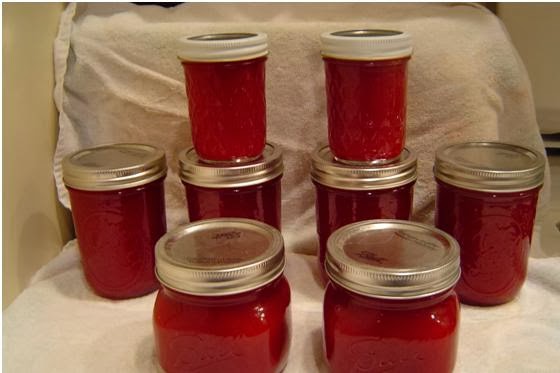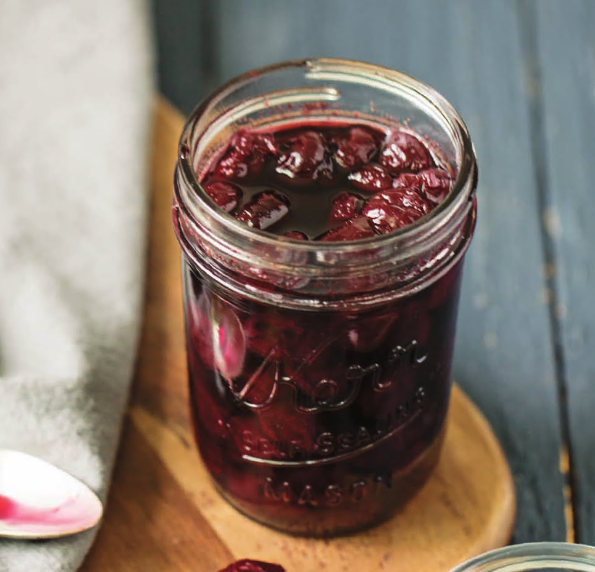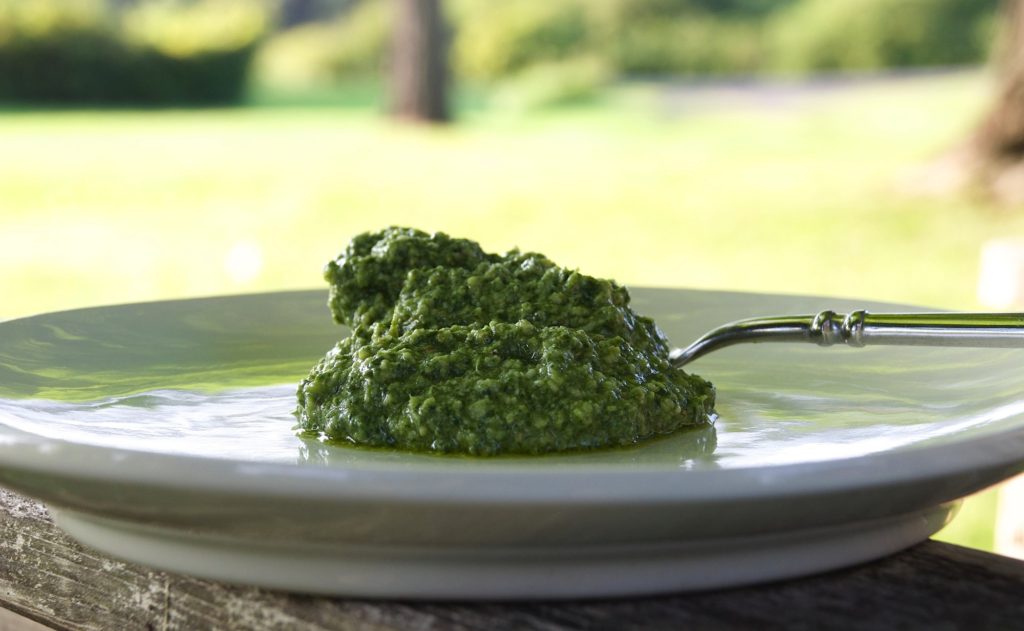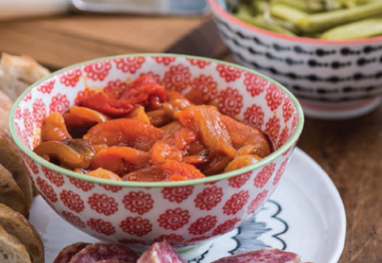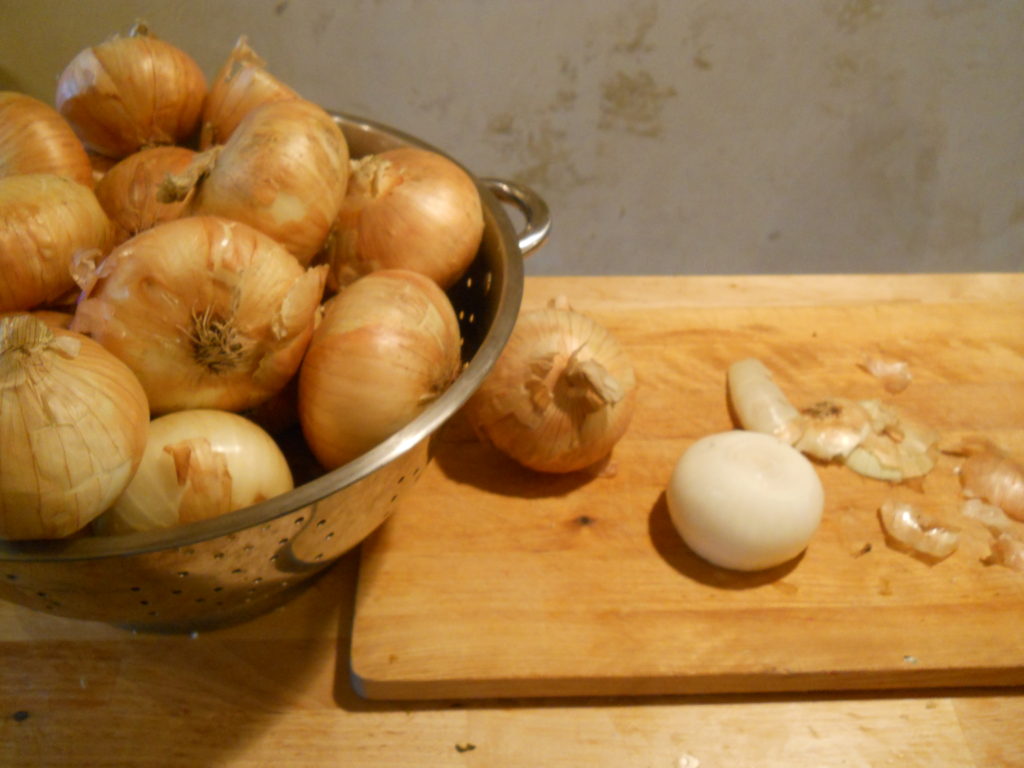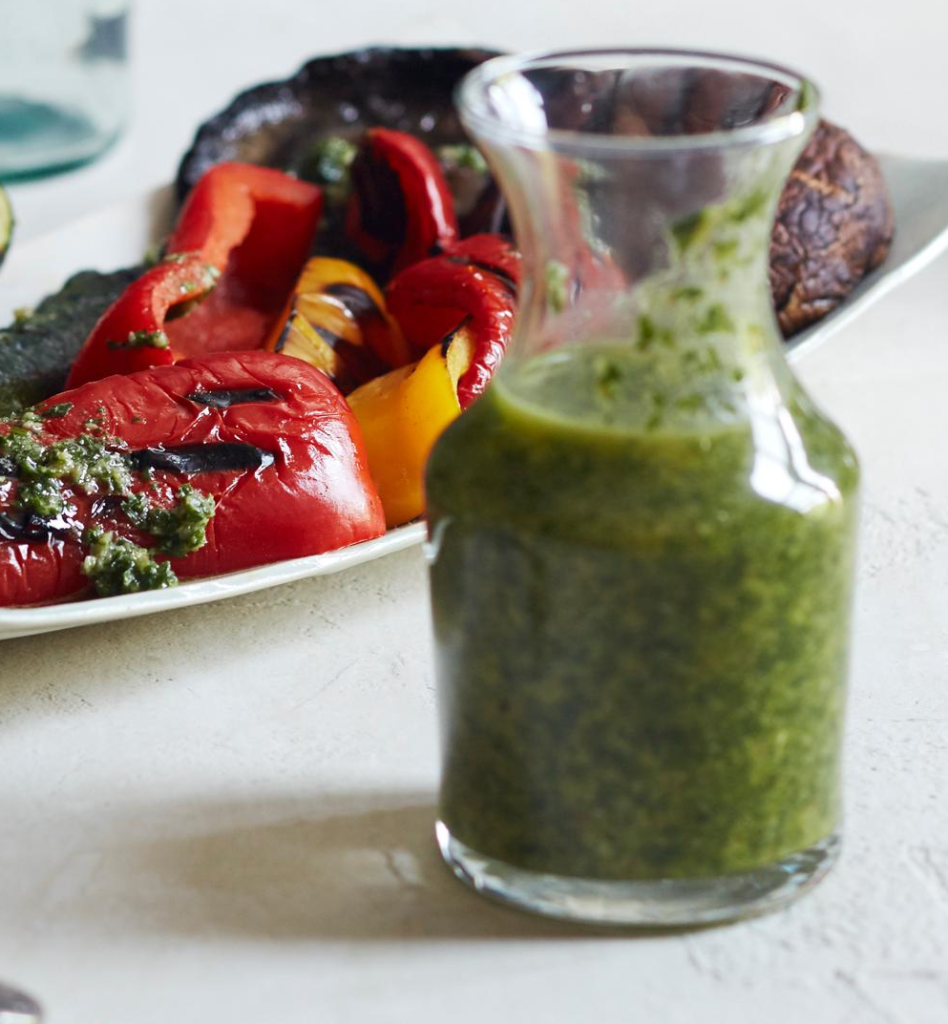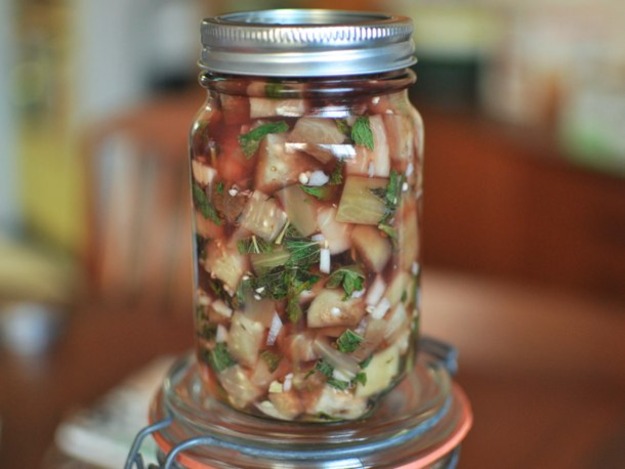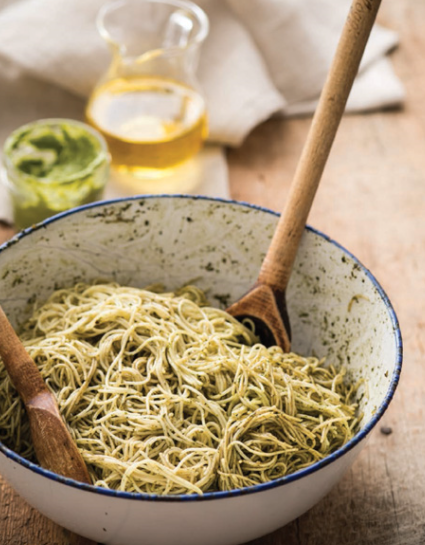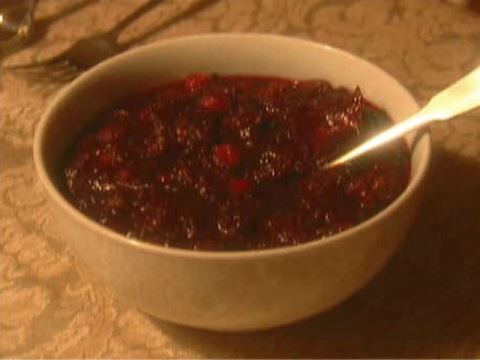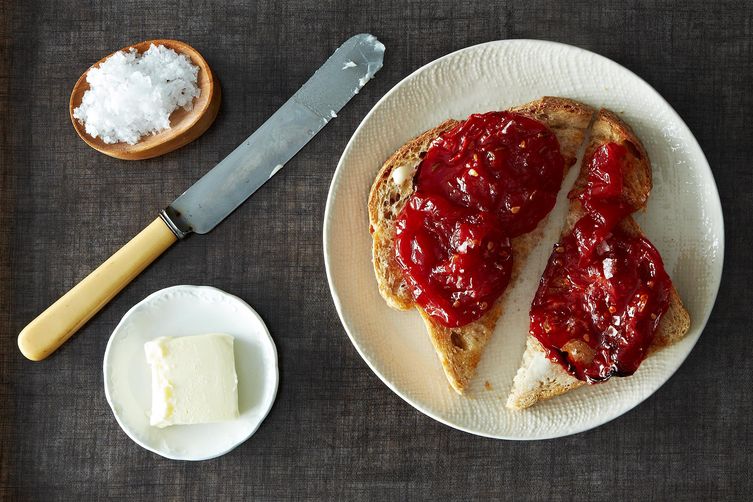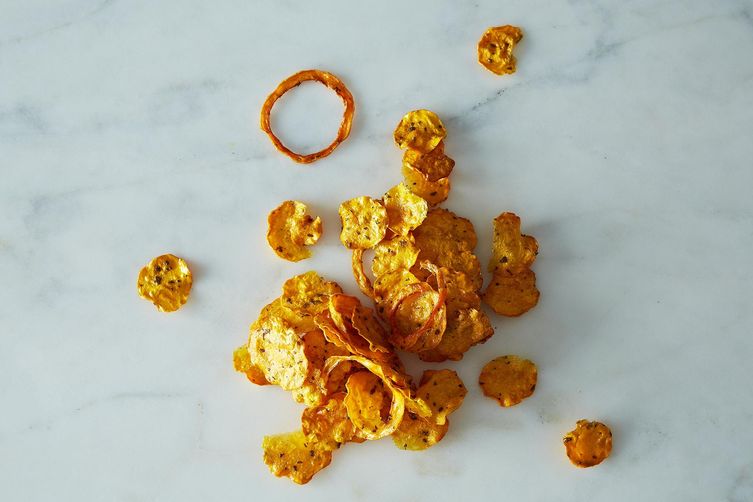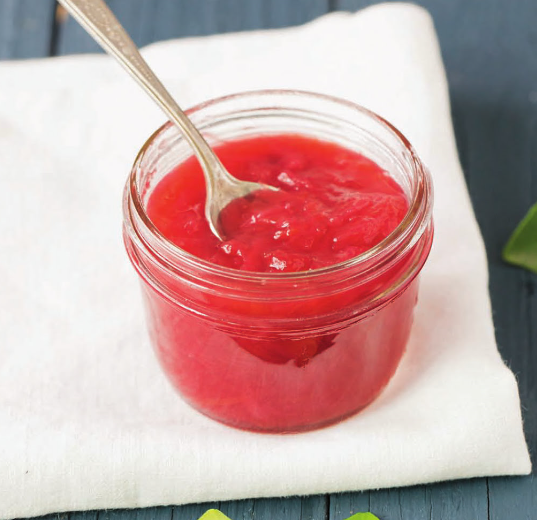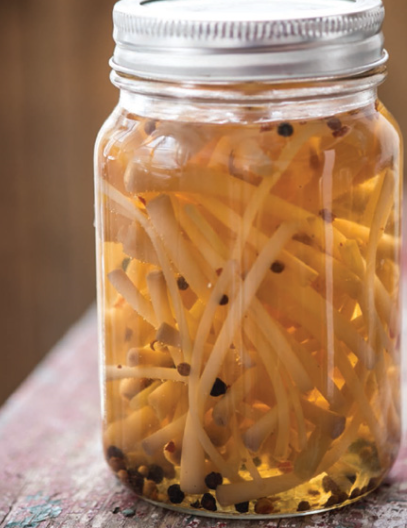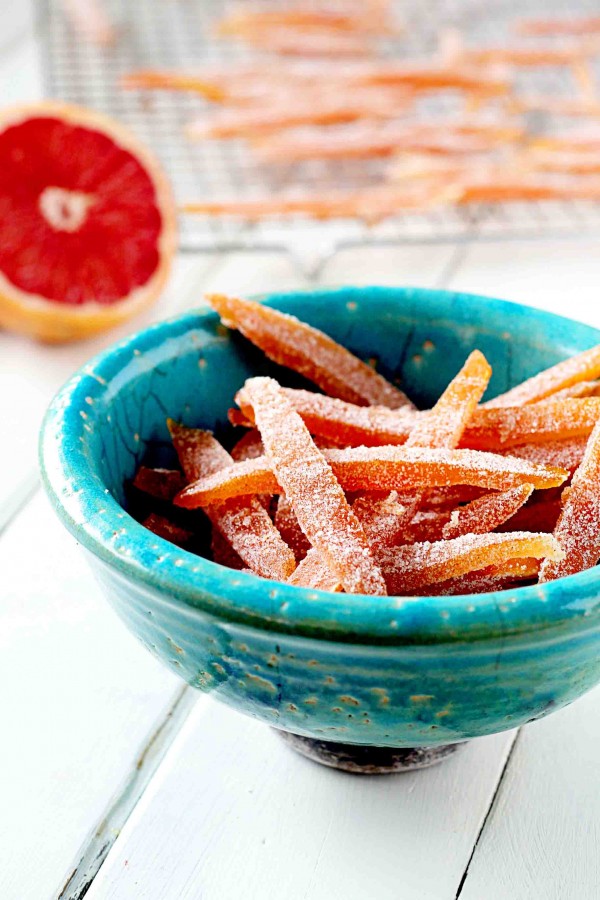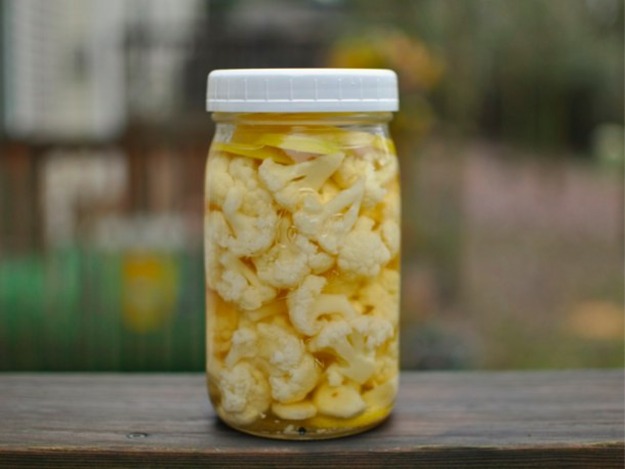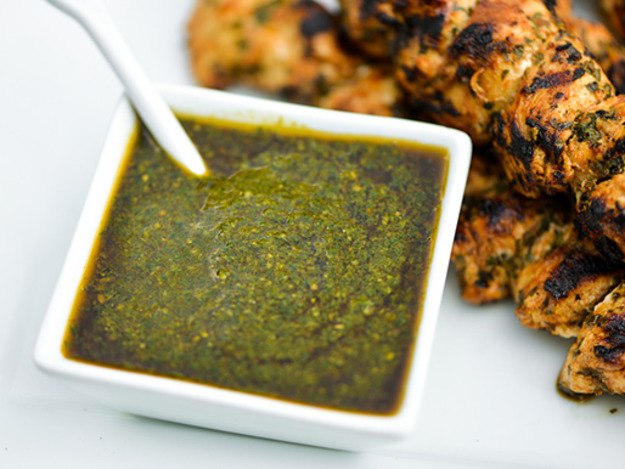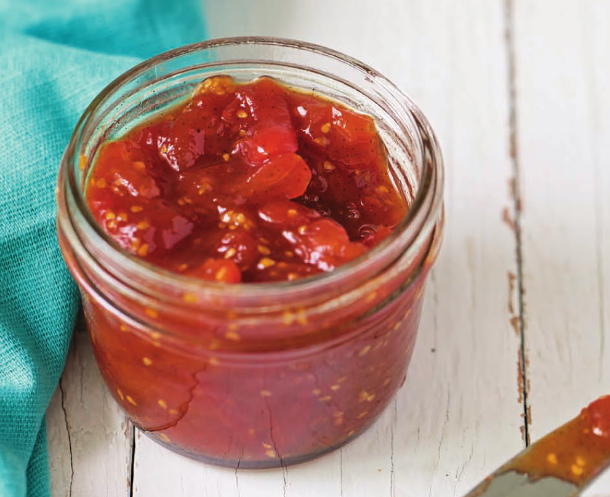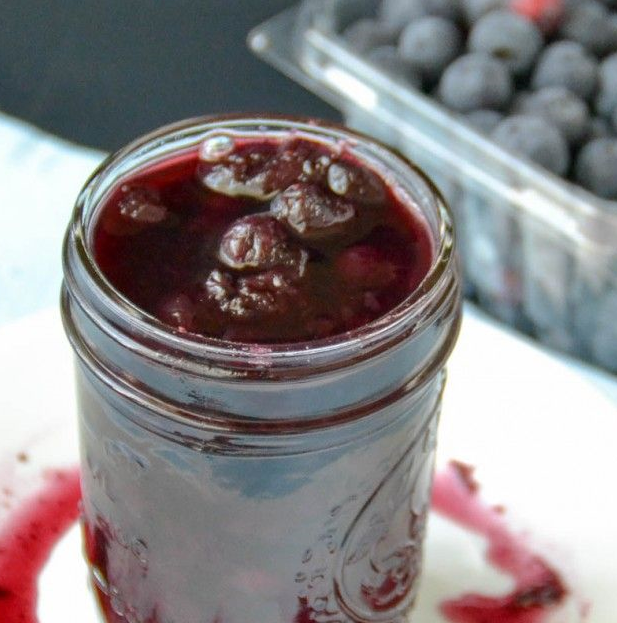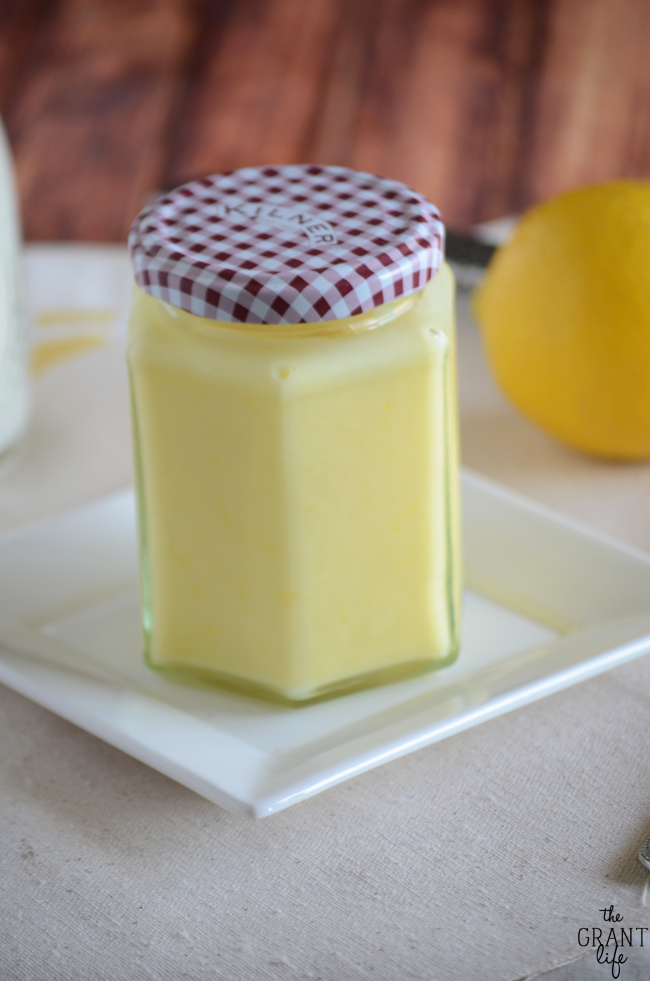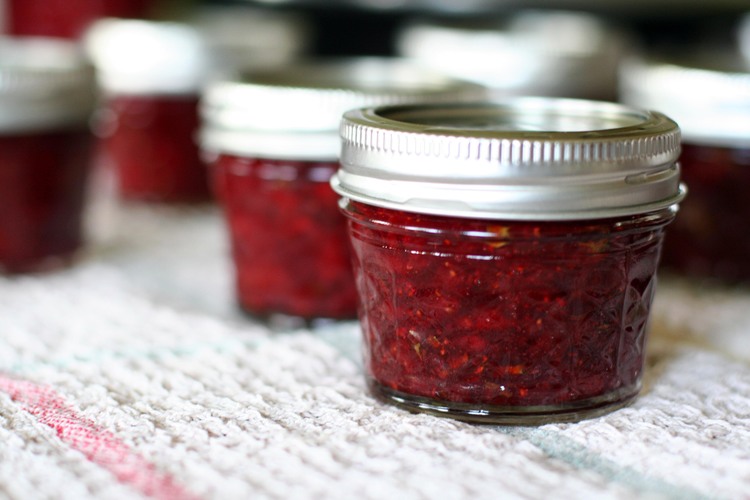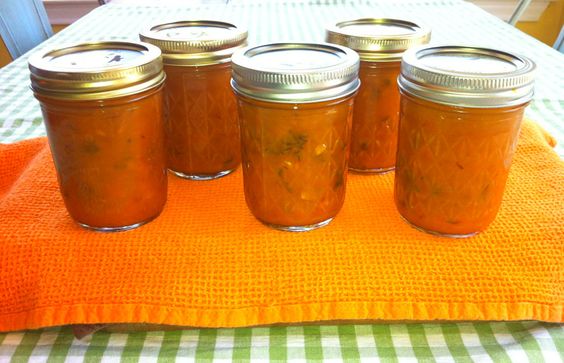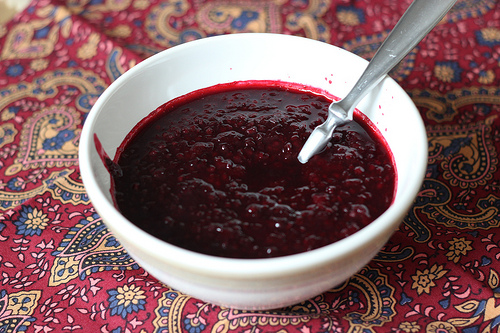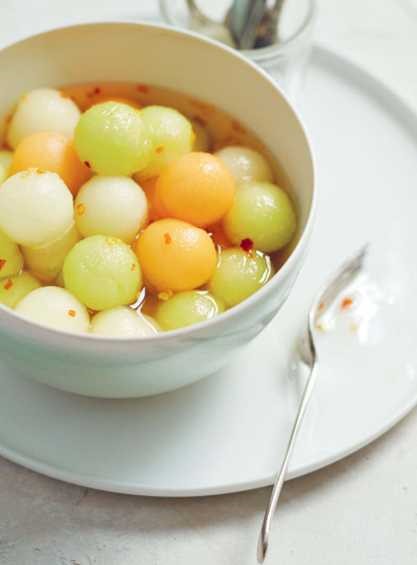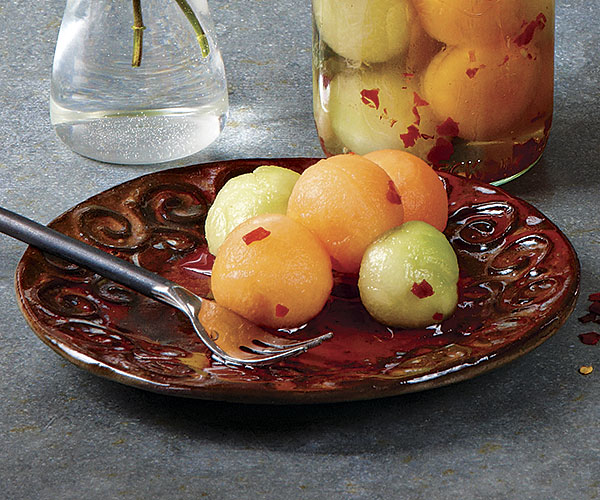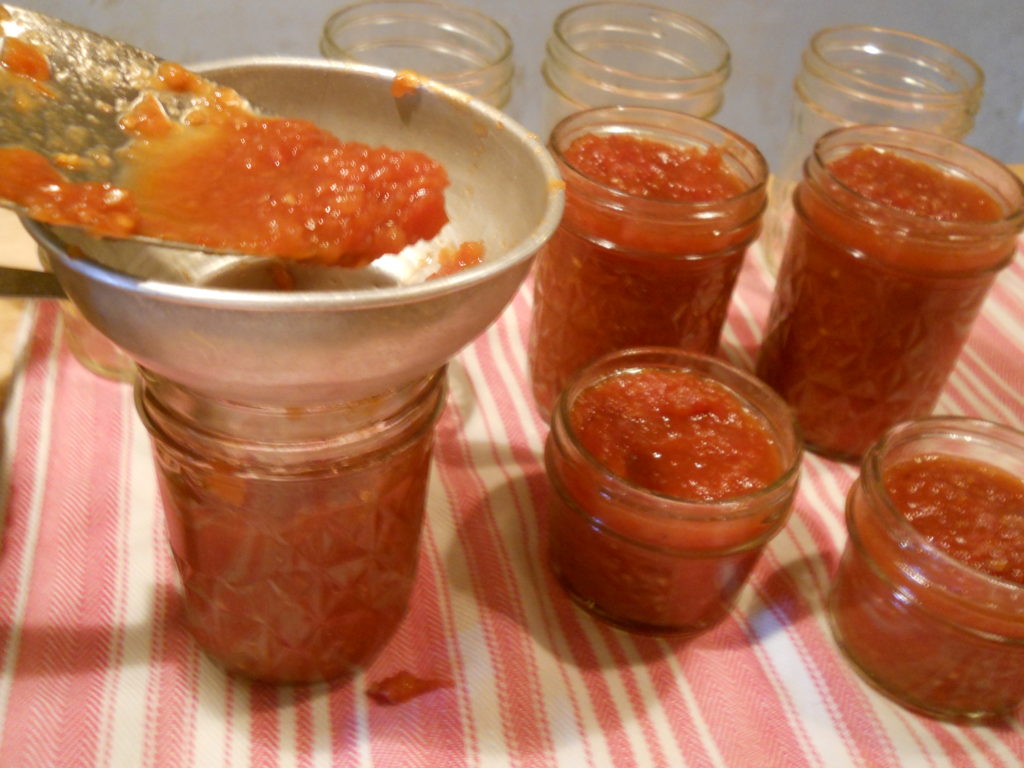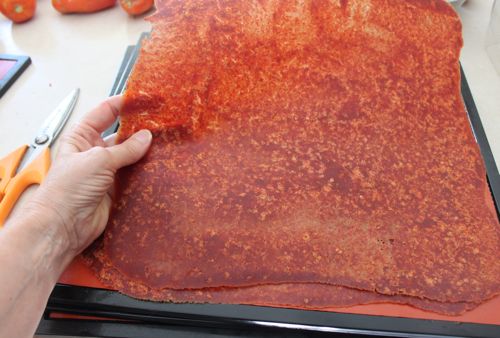 Heirloom organic tomatoes–preferably plum tomatoes or another variety that has more flesh and not as much juice.
Heirloom organic tomatoes–preferably plum tomatoes or another variety that has more flesh and not as much juice.
Honey–organic and local if possible
Lemon wedges
You can experiment with spices and seasonings once you get the hang of it.
Wash the tomatoes thoroughly and cut out all blemishes and stems. Puree 6 C. tomatoes (large chunks) in a blender (I love my Vitamix). This will give you about 3-4 C. puree depending on how juicy your tomatoes are. Add 1 tsp. honey per C. liquid and a slice of lemon (with the rind). Puree this into the tomatoes. Line the dehydrator tray with kitchen parchment paper (trim it to fit the tray) or Paraflexx®*, which is made by the Excalibur company and is perfect for this sort of thing. I also tried the shiny side of freezer paper and it worked okay. DO NOT USE foil, waxed paper or plastic bags. Pour about 3/4 to 1 C. the mixture onto each tray. Depending on how runny your puree is, you may need more or less per tray. You want it to be about 1/8″ thick at the center and about 1/4″ at the edges. This keeps the edges from drying out too fast and getting brittle. Leave about 1/2″ between the puree and the edge of the tray. Carefully load the trays into the dehydrator. Set the thermostat for 135˚F. Tomato leather should be ready in 8-10 hours depending on the moisture content of your puree. If you want to shorten the drying time, rotate the trays 180˚ halfway through the process. They are ready when there are no sticky spots in the middle but they are leathery and pliable. You can pull a tray out and see if the leather is easy to remove. It should come off in one piece. Place leather on a piece of plastic wrap. You can either roll it up on itself or roll it up in a piece of plastic. Which ever way you prefer, each rolled piece should be wrapped in plastic. Store in airtight containers in a cool dark place. If you make fruit leathers as well, do not store them with vegetable leathers. If you will not eat them all within a month, you might want to keep some of them in the freezer. Sometimes mine have gone bad after a while. But usually we eat them pretty quick. NOTE: One batch of my tomato leathers got a little too crisp around the edges. But after they had been wrapped up for a day, they were just fine.
Variations
You can also add other goodies to your tomatoes. Try some onion, green pepper, and/or garlic. Maybe some fresh basil or other herbs and spices. For starters, add
1 medium onion
1 green pepper
a clove of garlic
to 3 C. tomato puree and process until well blended. Then just follow the same instructions for drying plain tomato leather.
What to Do with Tomato Leather
Marinara Sauce: In a pan sauté onion, garlic, shredded carrot and dried or fresh herbs in olive oil. When everything is cooked, add in your reconstituted sauce and cook for several more minutes.
Pizza Sauce: Place tomato leather into an amount of boiling water. Add dried Italian seasoning and garlic for instant pizza sauce.
Tomato Paste: Add tomato leather pieces to the least amount of hot water possible. Better yet if you can pulverize the leather in a blender or food processor first.
Chili, Soups & Stews: Add squares of tomato leather directly to your pot of simmering chili, soup, or stew to thicken it and add extra tomato flavor.
Tomato Cream Sauce: Sauté onion and garlic until softened, then add in heavy cream or half and half and add tomato leather directly to it; simmer very low until leather has softened.
Tomato Sprinkles: Cut the leather into fine strips or whirl in the food processor or blender to make a fine crumb. Use for a topping on eggs, a green salad or even broccoli. Add some to chicken with pesto, or use in veggie dips. Roll it up in a pork or beef roulade. How about on a turkey sandwich or wrap? It is great in deviled eggs, crock pot recipes, vinaigrette dressings, and in hamburger patties. Tomato basil bread, anyone?
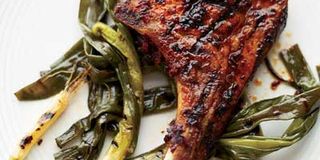 1/4 cup coarsely chopped onion
1/4 cup coarsely chopped onion